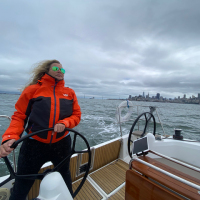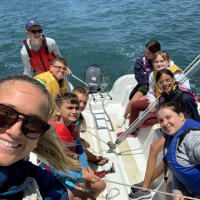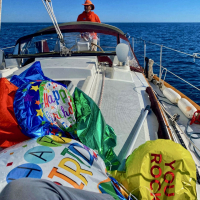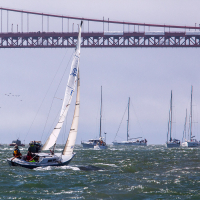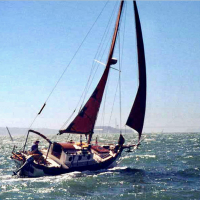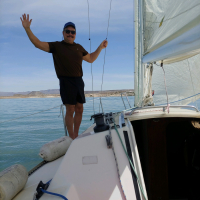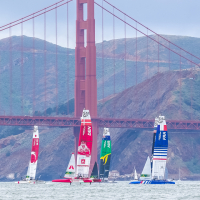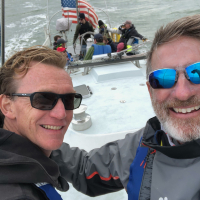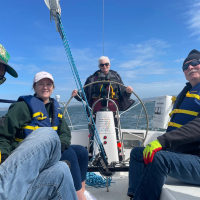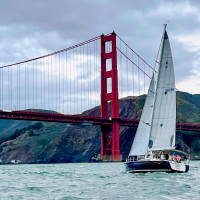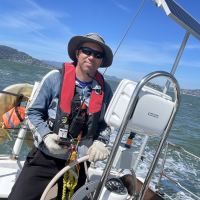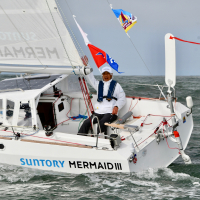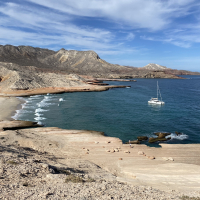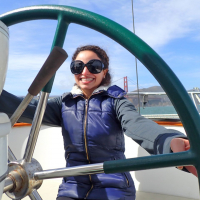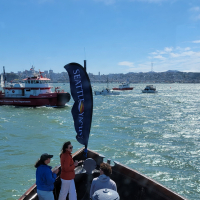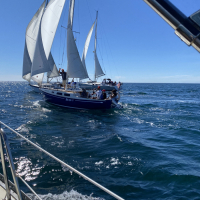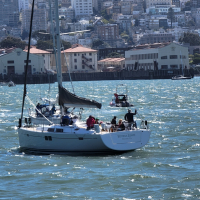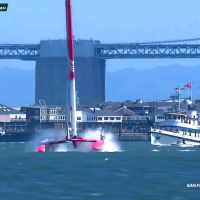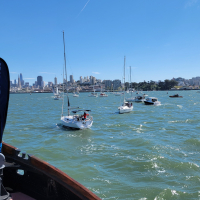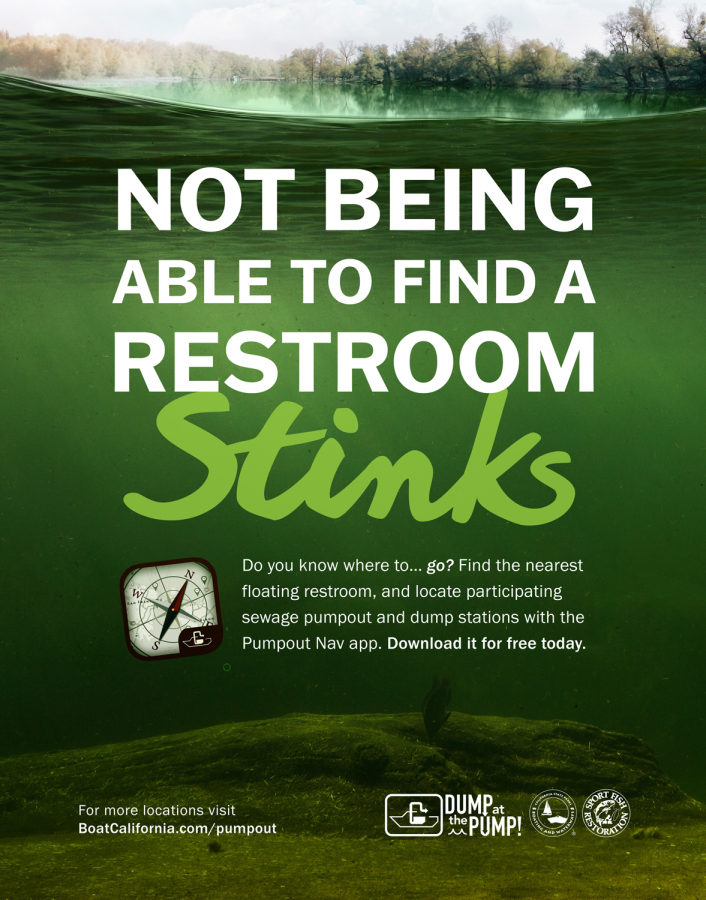
San Francisco to Impose “Sailing Toll” for People Driving to Boats; Funds Will Subsidize Luxury Bay Ferries
In yet another attempt to both alleviate the Bay Area’s worsening traffic congestion and bolster public-transit alternatives, the City of San Francisco is considering imposing what is being called a “non-essential-driving toll” that would include all manner of recreational activity — including people driving to go sailing. A copy of the proposal, which was obtained by Latitude 38, outlined the overarching philosophy of the plan, offered some details as to how the toll might be assessed and collected, and described a vision for expanded ferry service.
“We cannot ignore the fact that gridlocked traffic continues to worsen, and that strong measures are required to discourage driving,” the proposal read. In discouraging non-work-related trips, which were also classified as “luxury commuting,” the City of San Francisco’s Group on Traffic Congestion and Highway Authority said it can also shore up funds to increase non-road-based commuting infrastructures.
“Fees can be collected by tracking FasTrak toll tags, via GPS and other technology, to monitor driving,” the proposal read, detailing plans that would require drivers to list their work-related destinations, which would be considered essential. All nonessential or non-work-related driving would be “tollable” miles.
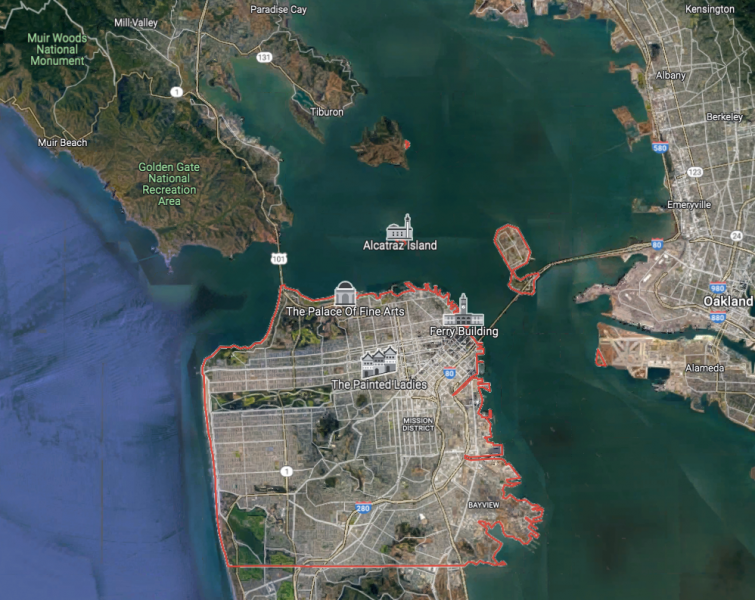
Perhaps the most ominous portent of the proposal was this passage toward the end of the document: “Other municipalities throughout the Bay Area have shown interest in this pilot plan, and are likely to impose some version of punitive measures on nonessential driving as populations increase, and some 50,000 cars are added to the road each year.”
The proposal said that ferry service was the most likely candidate to receive toll funds, and laid out an ambitious plan for a fleet of high-speed, high-volume ferries that would service the heart of the Bay Area’s shores. In describing the planned ferries, the proposal painted an opulent picture of what the vessels might entail, including full-service bars and grills; televisions playing sports, news, and CNN and Fox; high-end reclinable seats; massage therapists on staff (not included in the ticket price); and occasional live entertainment.
(To be fair, it sounds awesome.)
“Ferries are the most expensive form of transportation and require enormous public subsidies,” the proposal said, displaying a candor not often seen in government documents. “Even though there is an inherent romance associated with commuting on the water, there is an obvious need to further lure people with amenities to ensure sufficient ridership, and to justify the hefty investment in this particular public-transportation sector.”
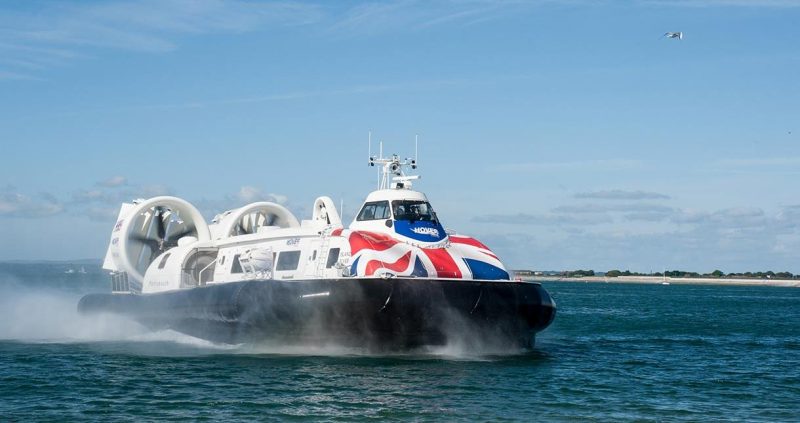
For years, public-ferry services have discussed plans for low-emission vessels. At present, ferries operate with “Tier 4” engines, which are the cleanest diesel engines in operation, but are perhaps analogous to low-tar cigarettes: There’s less tar, but you’re still literally smoking tar.
We also expect tolls in various forms, including bridge tolls — which ticked up another dollar on January 1 — to continue to rise, while the services they are meant to fund will continue to stagnate and be embroiled in lengthy debate. In other words, we expect to pay more for nothing, at least for the foreseeable future.
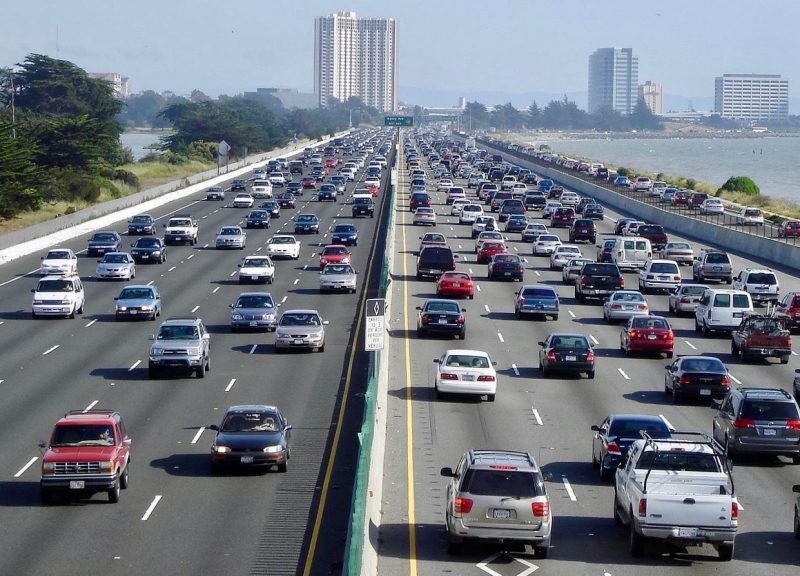
We can only imagine that “monitored driving” and the relatively subjective application of behavior-based fees will, justifiably, stoke the ire of privacy advocates, and clearly we are headed for protracted, taxpayer-funded litigation to trudge through these issues and, in all likelihood, arrive at the same stalemate from which policy makers originally embarked.
April Fools!
SailGP Announces New Family Foiling Weekender
SailGP fans heard throughout the championship weekend that the future of sailing is foiling. Following the successful conclusion of Season 2, SailGP has announced plans to expand the adoption of foiling into all aspects of sailing by introducing its new series of Family Foilers in 2023. The family-foiling line will start with a 30-footer, with the goal of expanding the line with 20-, 25-, 35- and 40-ft models; each model will be capable of one knot of speed for each foot of its length. So while the F50s are capable of about 50 knots, the FF30 (Family Foiling 30) will be capable of about 30 knots.
The high speeds are seen as critical in attracting more families to enjoy weekend sailing together.
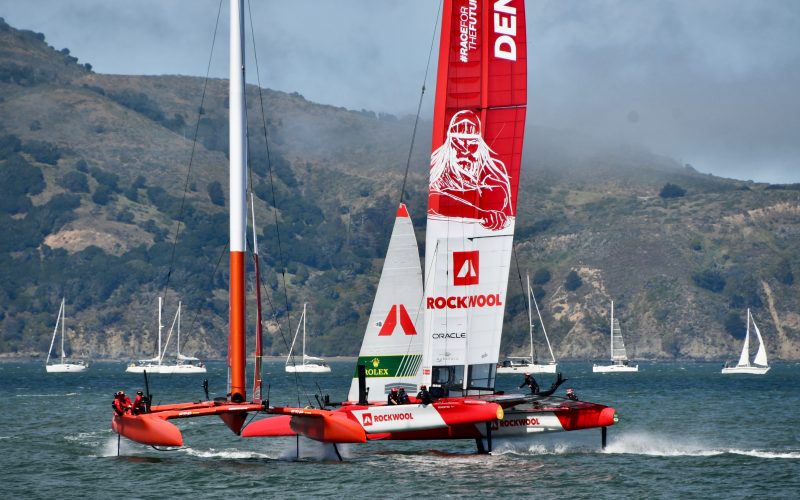
The first models will be delivered in spring 2023, and will be equipped with wing sails, foils, lithium batteries (which power the always-adjusting foils and store enough power for about four hours of sailing), lifejackets, helmets, body armor, oxygen bottles, two follow-along inflatable crash boats, safety knives, and eight hours of safety training for the average family of four. Refined foils of carbon or titanium are available. The ideal total crew weight for the Family Foiler 30 will be a 180-lb male, 110-lb female, and two kids averaging 65-lbs, in the starter package. Wing and foil sizes will be adjustable as the kids grow up and parents mature.
All the data from your family’s afternoon sail will be constantly updated in the Cloud, so you can replay your afternoon sail on your big screen at home or share it with friends. Friends will be able to track your every tack and monitor your heart rate and bladder control. Each safety helmet comes with virtual reality goggles and headphones so all data from the sail will be visible in your line of sight, with the natural backdrop of your sailing venue in the background.
If desired, you can select a sailing background of your choice, such as St. Barts, Mallorca or San Francisco, so you could be sailing virtually anywhere, even if you’re sailing on Pewaukee Lake in Wisconsin. Family communications will be via microphone and headphones — no need to shout over the wind. Natural sounds such as gulls laughing and seals barking can be selected to give the sail a more natural feel. Steering, trim and flight control can all be managed by the family or done automatically via the new autonomous sailing control package developed in partnership with Tesla.
The Family Foiling line of sailboats is seen as critical to getting fans out of the grandstands and onto the water sailing. Rather than afternoon picnics at the beach, youth softball, or walks in the park, a new generation of families will connect to one another, the Cloud and nature at 20-40 knots as the SailGP line of Family Foilers brings the future of sailing to life. The FF30 intro package starts at $650,000. Batteries, as we mentioned, are included.
KKMI Seeking Handyman/Facility Manager for Richmond
- General Sailing
- Racing
- Cruising
- Latitude 38 Magazine
- Current News
- Heading South
- Community Sailing
- Environmental News
- West Coast Sailing
April’s Latitude 38 Is Out Today – No Joke!
It’s April 1, and no fooling, we have a packed issue of Latitude 38 on the docks right now! Among the great stories from sailors who are out on the water cruising various seas, we have news of local racing, Max Ebb’s monthly insight, and Dave and Kelly Russo’s restoration of their Bombay Clipper 31, Sanctuary. Here’s a preview of a couple of this month’s feature stories.
Repowering with Green Energy
What’s the cool thing to do to your boat these days? Installing the latest and greatest carbon-fiber hardware? How about fancy new sails? Maybe you’ve gone with synthetic rigging, or started a YouTube channel. The most electrifying trend might be the one you don’t see, or hear, or smell. More and more sailors are ditching the diesel and going electric.
The need for alternative, green propulsion has never been greater, and the timing has perhaps never been better. With superior torque, simplicity, and ultra-quietness, electric motors are attractive, affordable options. Sailors can incorporate better batteries or even green fuels, or use a diesel genset as auxiliary power.
Berkeley Marine Center is one of many boatyards moving into electric-motor installation. They recently partnered with a small energy technology company to convert a sailboat to hydrogen power. Cree Partridge, boatbuilder and the owner of Berkeley Marine Center, hopes that his boatyard will one day become a hydrogen-fueling station for Bay Area boats, and will produce the fuel onsite using wind and solar power.
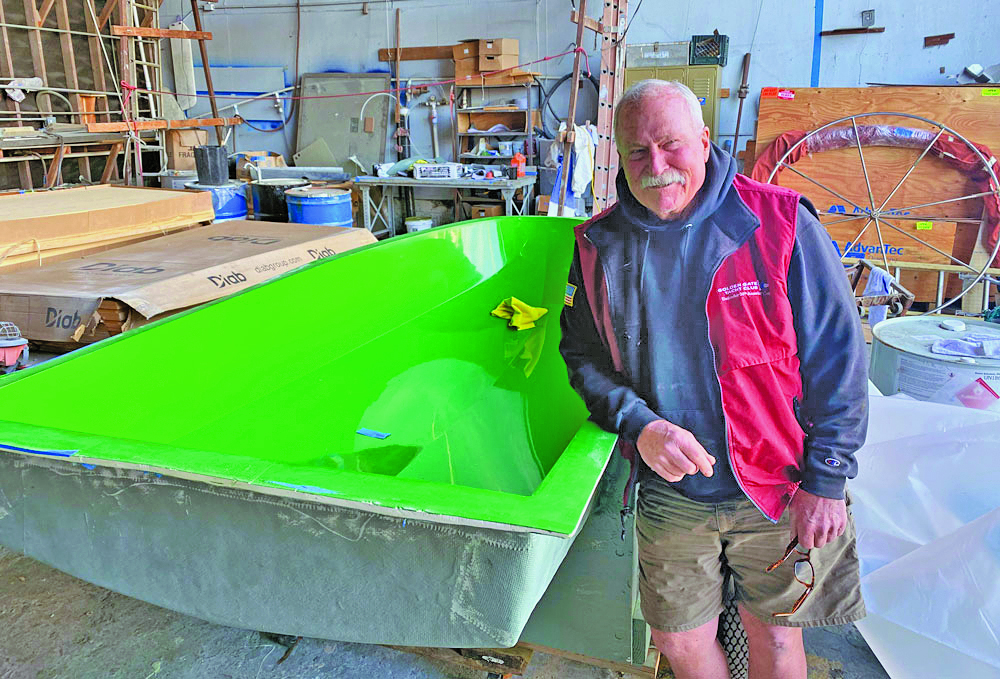
The Loss of Ashlee — A Perfect Storm of Unfortunate Events
I could hear the beeping of the autopilot, which was struggling to keep us on course in the big seas and winds. The old Autohelm 6000 had seen better days, and was probably due to be replaced. I decided to hand steer for a few hours to give the Autohelm a break. The seas had not calmed any over the evening, and in fact, appeared larger than in the hour before. My wife, Jan, was below trying to sleep. I had intended to wake her to take a watch, but with the autopilot down, I would have had to steer, as she would have been uncomfortable in such big seas.
Big seas! It’s such a relative word, but when you drop into a trough and can see only water around you, words lose value and primal instinct dominates. I could feel the boat sliding down the face of the waves and watched the speed pick up: 7, 8, 9 knots. As someone who has grown up sailing on San Francisco Bay and participated in the racing circuit (including the ocean), I was used to big winds and seas. It’s very different when it’s at night, 40 miles from land and remote from any assistance. So to say I was comfortable would be disingenuous.
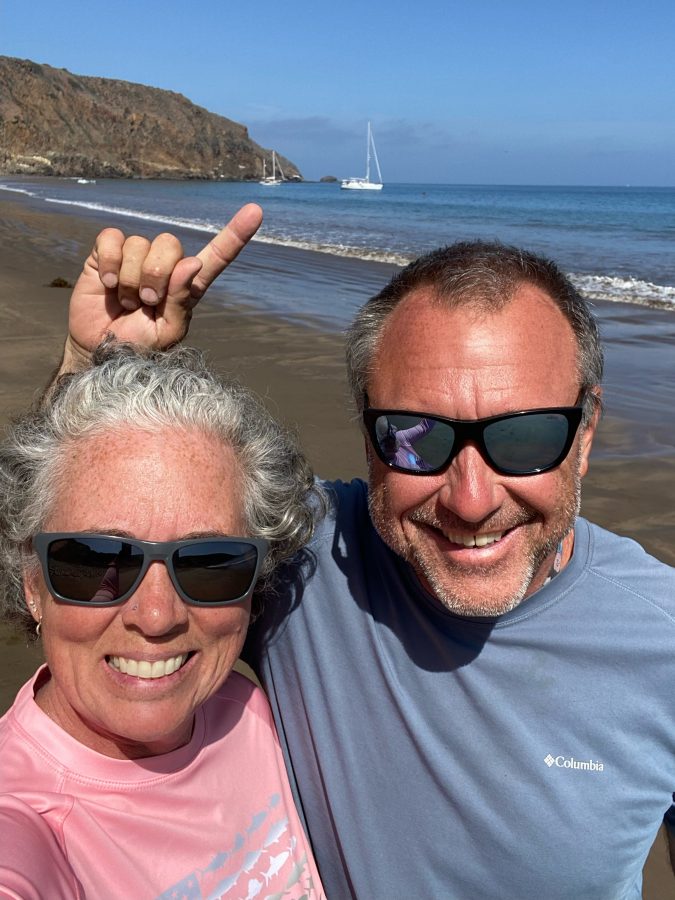
Also in the April issue:
- Letters: In the Heyday of Print Journalism; More Sleuthing on Black-and-White Pictures; This Is Why You Should Never Leave; Responsibility Instead of the Right; and many others …
- Racing Sheet: RYC’s Big Daddy Regatta, the SSS Corinthian Race, Corinthian Midwinters, the 5O5 North Americans, the NHYC-SDYC Islands Race, and the SCYA Midwinters at Cabrillo Beach YC.
- Sightings: What I Saw in the California Delta; South Pacific Opening Up to Cruisers; From Apprentice to Sailor; Yes, and What About the Delta Doo Dah?; and other stories.
- Changes in Latitudes: Rich and Laura Brazil share an Inside View of Commuter Cruising; Jim and Ellen Lussier Après-Ha-Ha Adventure; Rick and Gayle Leland’s Lady with a Past; and many more cruiser updates.
- World of Chartering: A Girls’ Getaway in the Sea of Cortez.
- Loose Lips: Check out the March Caption Contest(!) winner and top 10 comments.
- The sailboat owners and buyers’ bible, Classy Classifieds.
If you’ve subscribed to Latitude 38, you should receive your April issue in the mail any minute now. If you haven’t subscribed, you’re missing out. But you can pick up your copy from your favorite distributor.
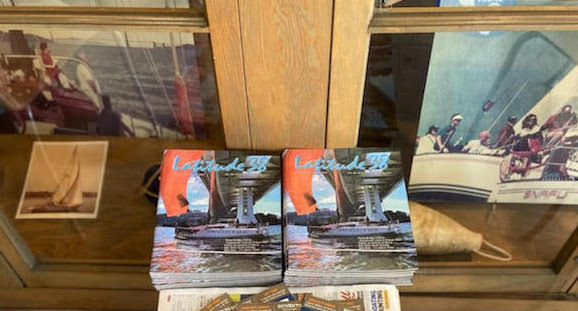
The Incident We Didn’t See at SailGP
We thought we had SailGP pretty well covered last weekend. We had crew on the press boat and ashore taking photos and notes on the two days of racing; we also attended the press conferences. Despite this, we still missed some interesting moments, and readers captured some of what we didn’t see at SailGP.
Capt. Jon Johnson, skipper of the Pearson 33-2 S/V Invictus, was on the water watching the racing from the sidelines with friends when an incident took place nearby. He wrote to give us his account of what took place. Reportedly, around 20 feet away, the former America’s Cup boat USA 76 was moving through the spectator fleet “right on the edge of the exclusion zone, carrying full canvas (as well as a full boat of passengers) and a great deal of speed,”
A short time later, Johnson’s friend and first mate was facing the stern when he saw USA 76 “barreling through the crowd carrying full sail heading east.” The first mate described the boat as cutting too close to a sloop that was slowly motoring in the same direction, “so USA 76 was the overtaking, and thus give-way, vessel.
“USA 76 then made a last-minute turn to starboard to avoid a collision, but in doing so turned into the wind (which was coming out of the south at the time) and increased his heel angle, which resulted in his mast, rigging and sail colliding [with] the mast and rigging of the other sloop.”
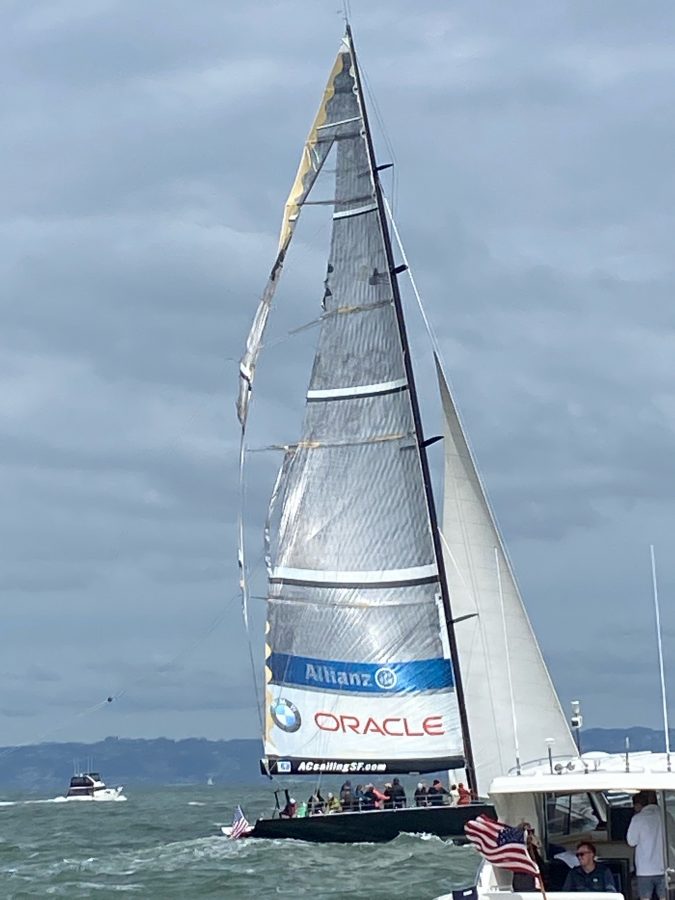
It appeared to the Invictus crew that no one on the sloop had been hurt in the incident, but Johnson, a professional charter captain, expressed his concerns. “I understand the desire to show your clients a good time and make sure they get their money’s worth. However, this kind of incredibly poor judgment is not only dangerous, but reflects poorly upon the entire sailing community.”
Invictus wasn’t the only boat that watched the incident unfold. Scott Ritter of the M/V Wolke, out of Sausalito, also witnessed the two boats’ tango. “I watched Oracle [USA 76] thread the needle through the spectator fleet and snag the rig of a sailboat under power.” And while he didn’t capture the moment on video, Scott did get a video of the torn-sailed USA 76 going past.
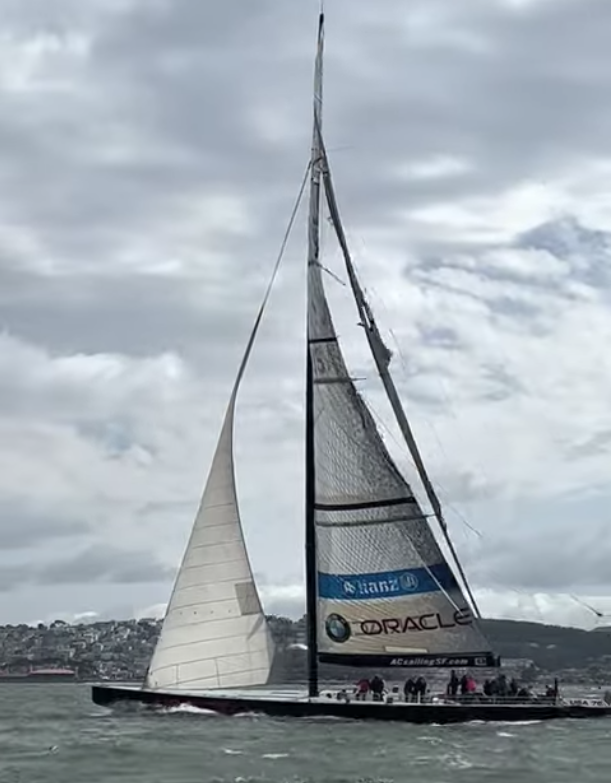
You can watch the video on YouTube.
As you can (hopefully) see, this story is not a joke for April Fools’ Day. These are unfortunate situations, but they are also moments from which we can all learn to improve outcomes in our own sailing lives. We did speak with USA 76 owner Brad Webb, who was not aboard that day but shared his regret for the incident and is grateful no one on board the snagged spectator boat or USA 76 was hurt. He said this is their first contact after 11 years and taking 28,000 people sailing on San Francisco Bay. They are in touch with both the Coast Guard and the owner of the other vessel to investigate the incident, take care of any damage, and learn whatever can be learned to avoid future problems. Of course, we were not there or onboard so won’t engage in speculation, and will let Brad and team sort through the details.
Sailing activity continues to ramp up with SailGP creating an explosive sailing weekend on the Bay. We’ll have some more angles on the eventful weekend to share next week. If you have other perspectives to pass along send them to [email protected] and we’ll share them in the magazine, ‘Lectronic Latitude, or our monthly Sailagram feed.
Sailagram: A Snapshot of March Sailing
Did you get out sailing in March? Judging from the number of submissions this month a lot of people got out sailing, and we could not be happier about it.
If you missed the boat this month, you will have another opportunity in April. Email photos to [email protected]

 Visit http://www.kkmi.com/jobs to learn more.
Visit http://www.kkmi.com/jobs to learn more.